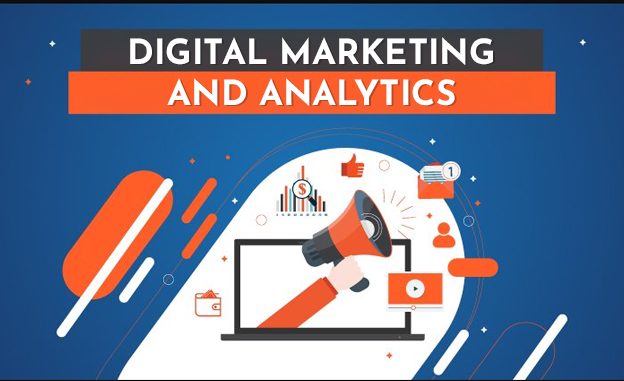
Digital Marketing and Analytics
One of the most difficult issues confronting businesses today is determining the efficacy of digital marketing.
The use of comprehensive digital marketing analytics is required to successfully evaluate the impact of marketing campaigns. When most marketers hear the word “digital analytics,” they think of web-based metrics like traffic, bounce rate, and unique visitors, which are generally linked with well-known analytics like Google Analytics.
However, this is only the tip of the iceberg when it comes to marketing information. While web analytics may provide you with a lot of information about your website’s performance, marketers need more data to understand how their marketing efforts affect conversion rates and the buyer’s journey.
By offering comprehensive insights into customer behavior, analytics allows digital marketers to analyze the effectiveness of their marketing activities and inform future decision-making.
The most powerful marketing analytics tools collect data from today’s businesses’ numerous channels for connecting with and engaging customers. It’s because of this consolidated perspective of your marketing data that you may gain important insights about your consumers’ behavior, desires, and potential next steps.
Consumers have become quite picky about which branded products they interact with and which they avoid. Brands must use analytics to create targeted personal advertisements based on individual interests rather than broad demographic connections if they want to grab the attention of the perfect consumer. Marketing teams will be able to deliver the appropriate ad, at the right time, on the right channel.
While digital marketing analytics are essential for effective campaigns, the analytical process is complicated by the vast amount of data that marketers can now access. This implies that marketers must figure out how to arrange data in a way that is easy to understand so that actionable insights may be derived.
Let us have a look at some examples of how data analytics can help us follow customers throughout the sales funnel.
Event-based or click-based tools track a user’s behavior across all of your brand’s touch points. This might be in the form of a mobile app, a platform, or a website. App analytics platforms, marketing automation, and web analytics are examples of these tools. Google Analytics is one of the most widely used tools. This tool addresses questions like what individuals do when they visit your site, what pages they view, how long they remain on the site, and more if you’re searching for detailed statistics on unique visitors. This aids in the development of the best plan for your brand in order to get better outcomes.
Most analytics display the information as a heat map, highlighting the parts that are often clicked or visited. Brands may reorganize how they function digitally to improve the consumer experience and provide better services by utilizing visual behavior.
Using predictive analytics, marketers can also find potential consumers and advertise additional items that they may be interested in. This also reveals which items could be suitable for a cross-sell.
The ability to connect with your customers anytime anywhere has opened a world of brand new opportunities. Learn to leverage these opportunities and study in detail how Digital Marketing Analytics can change your whole idea of communications. If you are someone who wants to become a digital marketing professional, you might also consider Executive Development Programme in Digital Marketing and Analytics by IIM Kashipur.

Leave a Reply